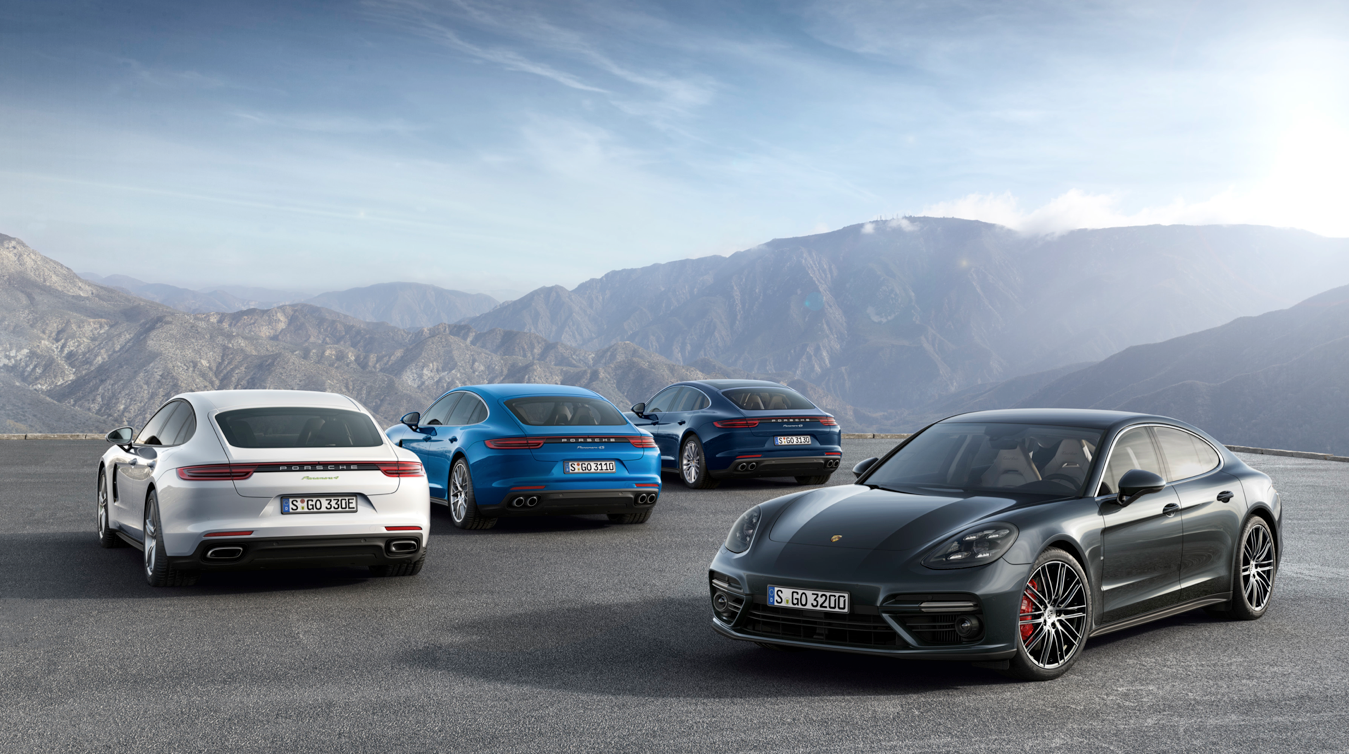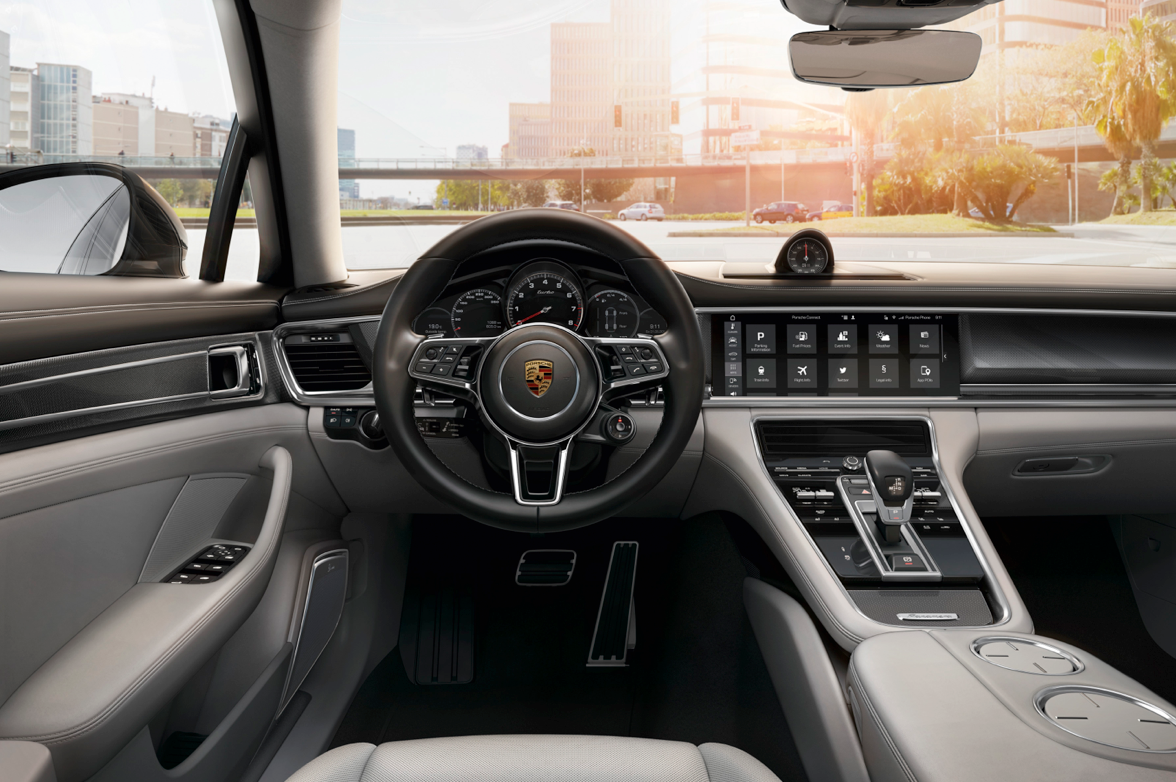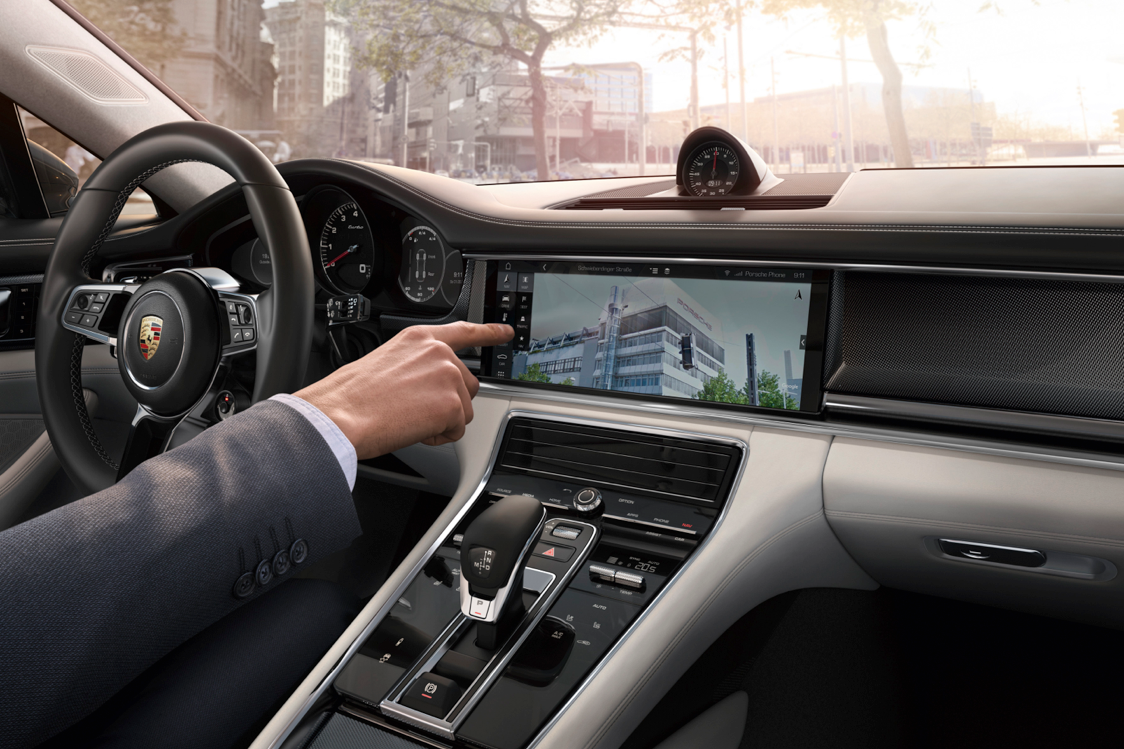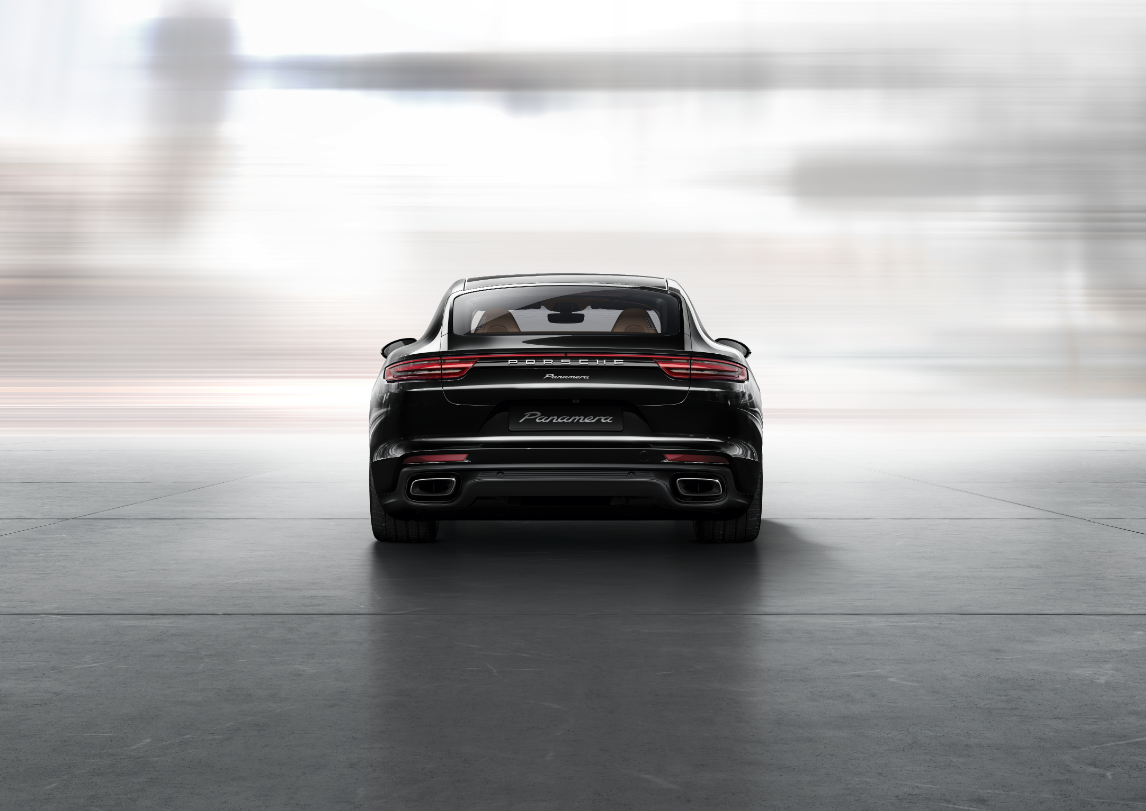In 2017, Porsche has introduced its new Panamera. The car has been redesigned with a lower roofline, a taller rear end and more stylish side panels. The redesign worked wonders and the new Panamera finally took on the likeness of the iconic 911 that was originally supposed to be its inspiration. Simply put, the car is a thing of beauty. This second-generation Panamera also boasts a new interior, transmission, cockpit and power plants. Overall, if there were any bugs in the first generation Porsche has now addressed them all and the upgrade was well worth the wait.
The first Porsche Panamera production model was first unveiled at the 13th Auto Shanghai International Automobile Show in Shanghai, China on April 2009. Known for their iconic sports cars, the Panamera was built as Porsche’s answer to a luxury sedan, or as Porsche’s marketing described it, “a sport car with four seats.” With its introduction, the carmaker had an instant winner on its hands.

- NEW POWER PLANT
- SMOOTH OPERATOR
- NOT YOUR FATHER’S PORSCHE
- TEST DRIVE
New Power Plant

This new generation Panamera is made up of three new models: The Panamera 4S with a standard 2.9 liter twin-turbo V6 engine providing 324kW (440 hp), the Panamera 4 Diesel with a 4.0 liter twin-turbo V8 engine capable of a respectable 310kW (422 hp), and the impressive top-of-the-line Panamera Turbo with a crushing 4.0 liter twin-turbo 404kW (550 hp) V8 monster.
The all-new engines are Porsche’s first use of what’s termed a ‘hot vee’ design: The turbos are fitted in the area between the opposing cylinders, which shortens the run for the exhaust gases between the heads and the turbines. By lowering the turbos into the valley of the engine it also improves response with the shorter piping. The new layout also allows the engine to be mounted lower creating a better center of gravity that helps with hugging the road. A twin-turbo design makes for more power, faster acceleration and less stress on the engine.
- NEW POWER PLANT
- SMOOTH OPERATOR
- NOT YOUR FATHER’S PORSCHE
- TEST DRIVE
Smooth Operator

Porsche has always been the gold standard in automatic shifting, and this second-generation Panamera is no exception. Its new eight-speed, dual-clutch gearbox shifts quickly and effortlessly between gears. In fact, you hardly notice gear changes after first gear is engaged. And of course if you don’t like its automatic setting you can always switch to manual shifting via the paddles on the steering wheel.
The 2017 Panamera now comes equipped with the Porsche Dynamic Chassis Control Sport, Porsche 4D Chassis Control, three chamber air suspension and for the first time in the Panamera, rear axle steering. These additions and improvements make for an agile, yet surprisingly comfortable ride. Another innovation is the Porsche Active Suspension Management, which is an electronic damper control system. It reacts to road conditions and driving styles, and continually regulates damping for each wheel according to needs. In addition there are three driving modes available: Normal, Sport and Sport Plus. All together, Porsche’s systems join to provide for enhanced driving stability, performance and comfort. Cornering comes easily, with minimal roll, and relatively high grip from the car’s 19-inch wheels (21-inch wheels are available as an option).
- NEW POWER PLANT
- SMOOTH OPERATOR
- NOT YOUR FATHER’S PORSCHE
- TEST DRIVE
Not Your Father’s Porsche
With the redesign driver and passengers sit closer to the ground in the new Panamera. Still, once seated, the front and rear bucket seats were comfortable and offered fantastic support.
While I found it a bit difficult getting in and out of the car (I’m a big guy) once seated the buckets felt like they were made to fit my body. And there’s ample legroom and headroom throughout the vehicle. At 6’3” tall, I had plenty of room and sat at the ideal, middle position to look through the front windscreen.
The second-generation cockpit is totally new and comes with touch sensitive panels and individually configurable displays. Other standard features include a keyless engine starting system, frameless and self-dipping rear-view mirror, two-zone climate control and cruise control.
Not only does the driver and front passenger sit on fully independent, adjustable seats but the rear passengers have them as well. While the Panamera is aimed at the market segment filled with cushy limousines and luxury cars, it actually drives as if it were a much smaller car and with seemingly far better control and handling. It’s kind of uncanny how you continually need to remind yourself that there really is a back seat.
- NEW POWER PLANT
- SMOOTH OPERATOR
- NOT YOUR FATHER’S PORSCHE
- TEST DRIVE
Test Drive

Porsche was kind enough to let me borrow the car for a day to put the driving machine through its paces. The new Panamera did not disappoint. Handling was remarkable and it felt as if each tire had a suction cup holding it down or better yet, a road made from Velcro. Cornering was impressive, due to the vehicle’s suspension and management systems, and roll was greatly reduced. You could hardly feel the turns, which is surprising for such a ‘big’ car.
Punching down the throttle had the most surprising result of all. This car flies! I clocked zero to 100kph in about 3.5 seconds. The twin turbo chargers make this engine hum. It’s not surprising that Porsche has incorporated an accelerometer into the dashboard to show G forces.
As I’ve related, it’s easy to forget that this car actually has a back seat. The new Panamera is a rocket on four wheels. Braking on the new vehicle is precise and requires little effort thanks to the car’s six-piston front and four-piston rear disc brakes. The cockpit layout is more like a jet fighter than a luxury car, and I especially liked the wide screen center panel that clearly showed vehicle systems, which could be switched to a very clear and big GPS navigation display.
As you would expect the new Panamera has a long list of standard luxury features that rival any of its competitors. However, I did find something a bit odd with this supercar. The Panamera seems to handle low speeds poorly and city driving was boring and a bit unfulfilling. It’s almost as if the car was begging to be driven hard and fast. Once the car reaches a decent speed it starts to purr like a cat and the driving becomes effortless… and fun!
Prices for the new Panamera start at S$360K and go all the way up to an eye-watering S$880K for the Panamera Turbo S E-Hybrid Executive model (without COE). And if you do purchase or drive this car, try to remember there is a back seat, if you have passengers.











 Back
Back
